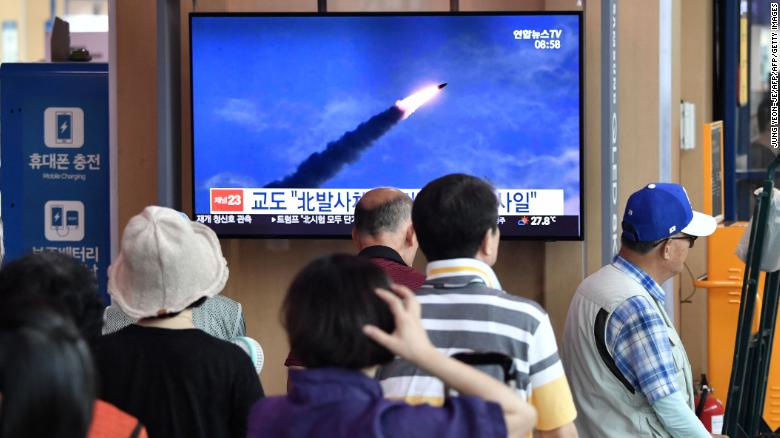Post by Admin on Aug 23, 2019 4:28:31 GMT
North Korea launched even more short-range, low-altitude missiles on Friday and vowed to end talks with the "impudent" South Koreans over Seoul's pledge to unify the peninsula...26 years from now.
It's the sixth apparent missile test in three weeks, since July 25.
It involved two missiles fired from a different location, this time in Kangwon province on the east coast, near the city of Tongchon.
Both reached an altitude of nearly 19 miles and flew 143 miles before falling into the sea between South Korea and Japan.
Worth noting: "The launch came a day after [South Korean President Moon Jae-in] pledged to try to reunify the Korean Peninsula by 2045 — the 100th anniversary of Korean independence — in his annual liberation day address," CNN reports. In that speech, Moon also said "South Korea has defense capabilities stronger than those of North Korea, and that his country was monitoring the situation with Pyongyang and was trying to prevent the escalation of tensions," CNN writes. (The Pentagon's main wish is always that the South hosters its guns and does not respond to the North's pokes.)

North Korea's reax to Moon: "We have nothing to talk any more with the South Korean authorities nor have any idea to sit with them again," according to Pyongyang's Committee for the Peaceful Reunification of the Country. (*Chef's kiss irony, right there.)


In addition, "the latest missiles are solid-fueled [which] makes them easier to deploy and fire on short notice: Liquid fuel is corrosive and less stable, and it has to be added to a missile just before launch, a process that can give an adversary vital warning. Solid-fuel rockets, mounted as these have been on vehicles, can be hidden, moved around at will and launched quickly, making them almost impossible to take out before they are fired."
Fact facts about today's early launches:
It involved two missiles fired from a different location, this time in Kangwon province on the east coast, near the city of Tongchon.
Both reached an altitude of nearly 19 miles and flew 143 miles before falling into the sea between South Korea and Japan.
Worth noting: "The launch came a day after [South Korean President Moon Jae-in] pledged to try to reunify the Korean Peninsula by 2045 — the 100th anniversary of Korean independence — in his annual liberation day address," CNN reports. In that speech, Moon also said "South Korea has defense capabilities stronger than those of North Korea, and that his country was monitoring the situation with Pyongyang and was trying to prevent the escalation of tensions," CNN writes. (The Pentagon's main wish is always that the South hosters its guns and does not respond to the North's pokes.)

ICYMI: North Korea just promoted 103 scientists for their work with the military. (We'd read more about it, but it's behind NK Pro's paywall, here.)

A North Korean knuckleball (that the U.S. maybe can't hit): They include the KN-23, "which appears similar to the Russian Iskander missile, [that] took a lower trajectory, spending much of its flight at an altitude of 25 to 30 miles — potentially too high for the Patriot batteries, but too low for THAAD and Aegis systems to easily intercept," the Washington Post reports, adding this baseball reference: "The KN-23 is like a knuckleball — fast, low, unpredictable and almost impossible to catch."

In addition, "the latest missiles are solid-fueled [which] makes them easier to deploy and fire on short notice: Liquid fuel is corrosive and less stable, and it has to be added to a missile just before launch, a process that can give an adversary vital warning. Solid-fuel rockets, mounted as these have been on vehicles, can be hidden, moved around at will and launched quickly, making them almost impossible to take out before they are fired."











